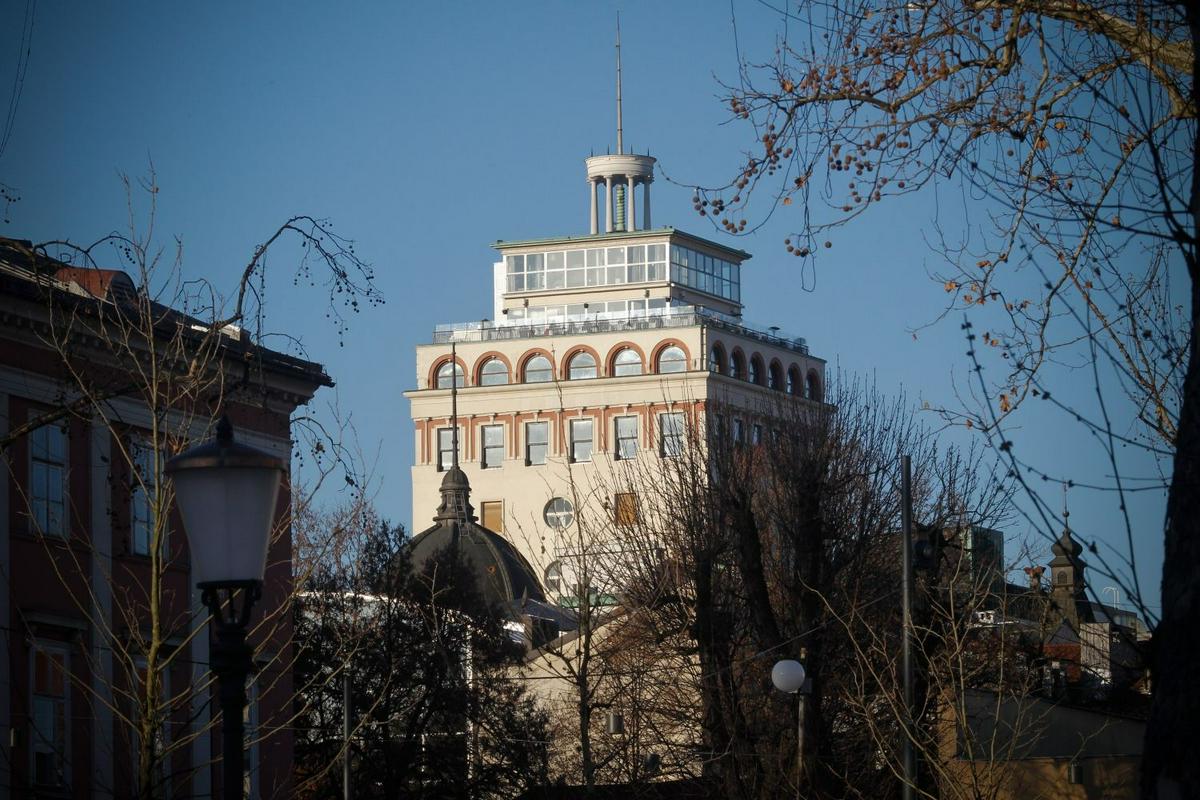
A “skyscraper war” recently erupted between New York and Chicago. At issue: Whether Chicago’s Willis Tower (formerly Sears Tower) or New York’s new One World Trade Center can lay claim to the title of North America’s tallest building. (In the end, it took an international panel of experts to decide that the New York building is taller because its spire is considered an architectural feature, while the Wilis Tower’s transmitters are not.)
Ljubljana also had a record-holding skyscraper at one time. The art deco building known simply as “the Skyscraper”, or “Nebotičnik” opened its doors in 1933. Inspired by American skyscrapers of that era, it was much lower than most of them, but its 13 floors and 70 meters (or 230 feet) were enough to make it “the tallest building in the Balkans,” as it was promoted at the time.
It wasn’t just its height that made “Nebotičnik” special. Its lobby was covered by marble from Slovenia’s Karst region and the building’s exterior was adorned with several statutes. It also featured groundbreaking technology, such as three separate elevators, forced-air ventilation in the rooftop café, central heating, as well as state-of-the art Japanese anti-earthquake foundations, which still make it one of the city’s safest buildings.
Because of its unmistakably American-looking design, the combined office-residential building stood apart from anything else ever built in Ljubljana. That, along with its height, made it the object of fierce debate. Some critics resented the fact that it now rivaled the Ljubljana Castle as the central element of the city’s skyline, while others feared that it would cause Ljubljana to lose its baroque character.
In the end the people of Ljubljana came to love their Skyscraper. Even though it’s no longer the tallest building in Ljubljana, it remains one of the city’s most iconic structures and attracts thousands of locals and tourists alike to its observation deck and café.
The building’s architect, Vladimir Šubic, fared less well. Distrusted because of his cosmopolitanism, he was briefly imprisoned by the Communist authorities after World War II. Sent to work in a construction brigade, he died in mysterious circumstances. The official cause of death was heart attack.

































































